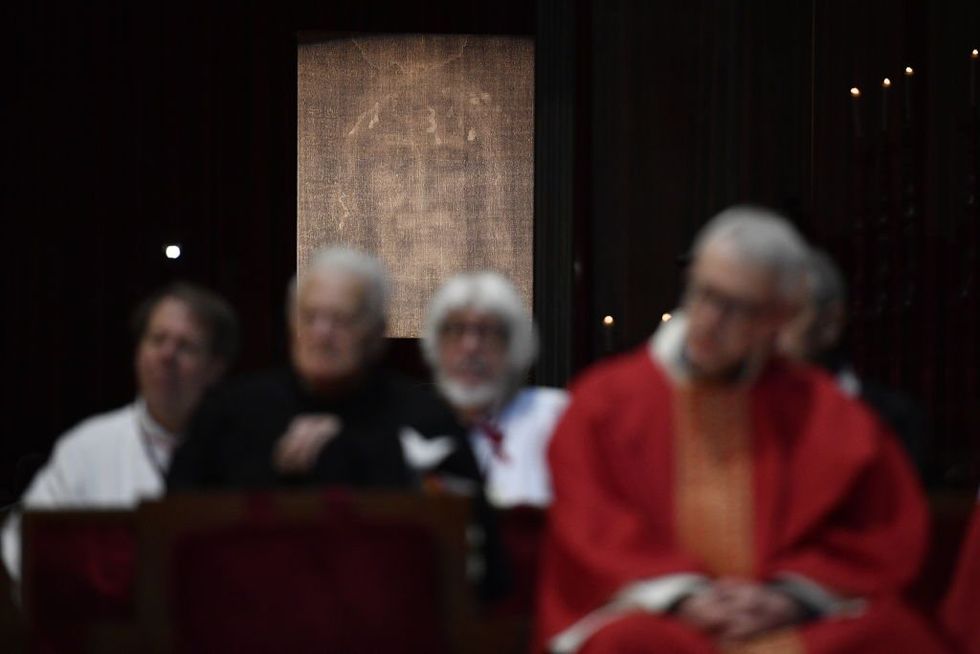AI has shown us the face of Christ. Will it bring more to the faith?
Every generation gets to choose whether or not to abandon Christianity. In 2,000 years, no generation has fully walked away. The irony is hard to miss: The very tool we feared might render faith obsolete has given us the most human image of Jesus yet. Science, thought to replace God, is now part of the process that brings us back to Him. Christianity isn’t merely a story that’s been retold for millennia; it is the story. It’s the one that never grows old, never fades with the times. Sometimes, the new chapters of this story come in the most unexpected ways. A recent example is how the Shroud of Turin — a centuries-old relic long thought to be a medieval hoax — found its way back into the public conversation. Best of all, it wasn’t a miracle that rekindled interest in the cloth. It was science. From skepticism to wonder For decades, modern skepticism relegated the Shroud of Turin to the realm of medieval forgery, debunked by carbon-dating tests in the 1980s. Science was supposed to bring clarity, to expose the myths that faith had built. But here we are again. The Shroud has returned, and this time, it is technology itself that has reignited the mystery. Former "Saturday Night Live" star and recent Catholic convert Rob Schneider was so inspired by his encounter with the relic that's he's making a movie about it. "It breathed life into me," he explains. It’s not just Schneider. The Shroud’s reappearance on the world stage reveals something far bigger. Science, which was once so sure it could unmask religion’s mysteries, is now revealing new layers. Tiny particles of pollen, identified through advanced equipment, suggest that the cloth’s origins trace back to the Middle East — specifically Israel. New scientific methods like wide-angle X-ray scattering dated the Shroud far earlier than previously thought — around A.D. 55. The lines between myth and reality are blurring. Science, once believed to be Christianity’s greatest adversary, is suddenly taking a seat at the table of faith. AI gave us the face of the Lord But it’s not just relics like the Shroud that are undergoing a digital transformation. Technology is now playing a central role in how we encounter faith. The face of Jesus — something people have dreamed of, imagined, and painted for millennia — has been recreated by artificial intelligence. Using data from the Shroud and other sources, AI systems have attempted to render what may be the most accurate depiction of Christ’s face. It’s a face that’s both familiar and new. The long hair, the beard, the haunting eyes — eyes that seem to look into not just the world but each of us, individually, deeply. The irony is hard to miss: The very tool we feared might render faith obsolete has given us the most human image of Jesus yet. Science, thought to replace God, is now part of the process that brings us back to Him. As we hurtle deeper into the digital age, we’ve been conditioned to seek meaning in data, in pixels and screens, in algorithms that shape our reality. And yet these same tools are leading us back to questions that are profoundly ancient. The face of Christ, now digitized and rendered in high definition, serves as a reminder: The divine is not so easily replaced. Back to the heart of belief For centuries, the Christian faith has thrived on a core paradox: to believe without seeing. When the apostle Thomas doubted the resurrection, Jesus appeared and offered his wounds as proof. "Blessed are those who have not seen and yet have believed," He added (John 20:29). He was talking about us. You and me. Now, in the 21st century, science is offering glimpses of what once seemed impossible to prove. While we may never confirm the Shroud’s authenticity beyond a shadow of a doubt, the mere possibility forces us to grapple with something bigger. Faith isn’t about what’s seen — it’s about what transcends sight. And sometimes, when technology allows us to glimpse the mysteries of old, it invites us to marvel rather than dismiss. The resurrection has always tested human comprehension. It’s a story of victory over death, a promise at the heart of the Christian faith. As AI constructs the face of Christ and science re-examines ancient relics, the digital world and the divine collide in unexpected ways. We aren’t abandoning faith; we’re rediscovering it through the very tools meant to replace it, tools that allow us to stare deeply into that unmistakable face, those never-ending eyes.


Every generation gets to choose whether or not to abandon Christianity. In 2,000 years, no generation has fully walked away.
The irony is hard to miss: The very tool we feared might render faith obsolete has given us the most human image of Jesus yet. Science, thought to replace God, is now part of the process that brings us back to Him.
Christianity isn’t merely a story that’s been retold for millennia; it is the story. It’s the one that never grows old, never fades with the times.
Sometimes, the new chapters of this story come in the most unexpected ways. A recent example is how the Shroud of Turin — a centuries-old relic long thought to be a medieval hoax — found its way back into the public conversation.
Best of all, it wasn’t a miracle that rekindled interest in the cloth. It was science.
From skepticism to wonder
For decades, modern skepticism relegated the Shroud of Turin to the realm of medieval forgery, debunked by carbon-dating tests in the 1980s.
Science was supposed to bring clarity, to expose the myths that faith had built. But here we are again. The Shroud has returned, and this time, it is technology itself that has reignited the mystery.
Former "Saturday Night Live" star and recent Catholic convert Rob Schneider was so inspired by his encounter with the relic that's he's making a movie about it. "It breathed life into me," he explains.
It’s not just Schneider. The Shroud’s reappearance on the world stage reveals something far bigger.
Science, which was once so sure it could unmask religion’s mysteries, is now revealing new layers. Tiny particles of pollen, identified through advanced equipment, suggest that the cloth’s origins trace back to the Middle East — specifically Israel. New scientific methods like wide-angle X-ray scattering dated the Shroud far earlier than previously thought — around A.D. 55.
The lines between myth and reality are blurring. Science, once believed to be Christianity’s greatest adversary, is suddenly taking a seat at the table of faith.
AI gave us the face of the Lord
But it’s not just relics like the Shroud that are undergoing a digital transformation. Technology is now playing a central role in how we encounter faith.
The face of Jesus — something people have dreamed of, imagined, and painted for millennia — has been recreated by artificial intelligence. Using data from the Shroud and other sources, AI systems have attempted to render what may be the most accurate depiction of Christ’s face.
It’s a face that’s both familiar and new. The long hair, the beard, the haunting eyes — eyes that seem to look into not just the world but each of us, individually, deeply.
The irony is hard to miss: The very tool we feared might render faith obsolete has given us the most human image of Jesus yet. Science, thought to replace God, is now part of the process that brings us back to Him.
As we hurtle deeper into the digital age, we’ve been conditioned to seek meaning in data, in pixels and screens, in algorithms that shape our reality.
And yet these same tools are leading us back to questions that are profoundly ancient. The face of Christ, now digitized and rendered in high definition, serves as a reminder: The divine is not so easily replaced.
Back to the heart of belief
For centuries, the Christian faith has thrived on a core paradox: to believe without seeing. When the apostle Thomas doubted the resurrection, Jesus appeared and offered his wounds as proof. "Blessed are those who have not seen and yet have believed," He added (John 20:29).
He was talking about us. You and me.
Now, in the 21st century, science is offering glimpses of what once seemed impossible to prove.
While we may never confirm the Shroud’s authenticity beyond a shadow of a doubt, the mere possibility forces us to grapple with something bigger. Faith isn’t about what’s seen — it’s about what transcends sight. And sometimes, when technology allows us to glimpse the mysteries of old, it invites us to marvel rather than dismiss.
The resurrection has always tested human comprehension. It’s a story of victory over death, a promise at the heart of the Christian faith.
As AI constructs the face of Christ and science re-examines ancient relics, the digital world and the divine collide in unexpected ways. We aren’t abandoning faith; we’re rediscovering it through the very tools meant to replace it, tools that allow us to stare deeply into that unmistakable face, those never-ending eyes.
Originally Published at Daily Wire, World Net Daily, or The Blaze
What's Your Reaction?





























































































